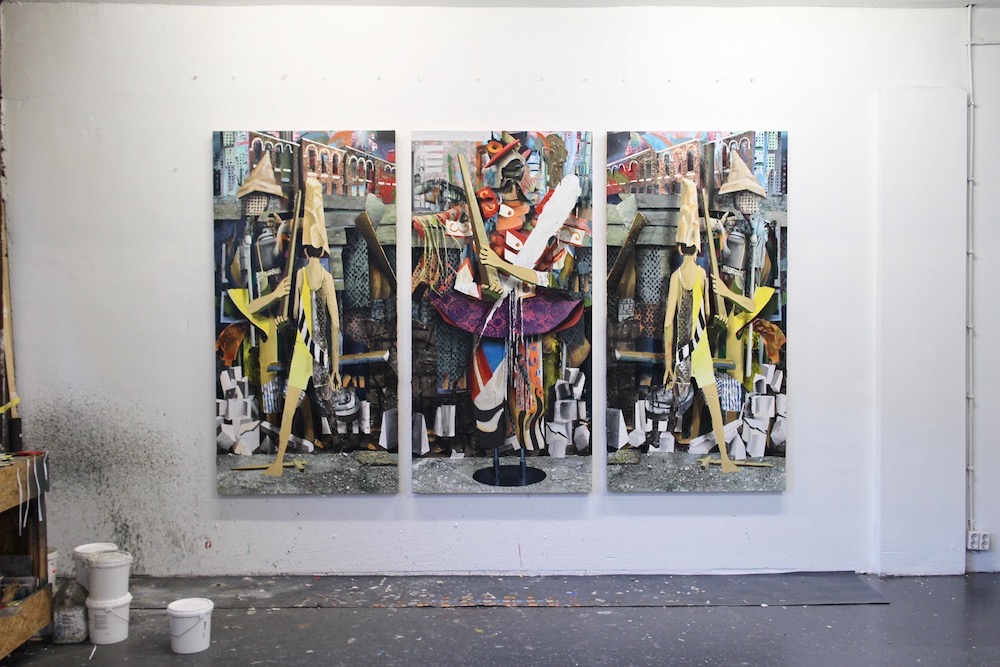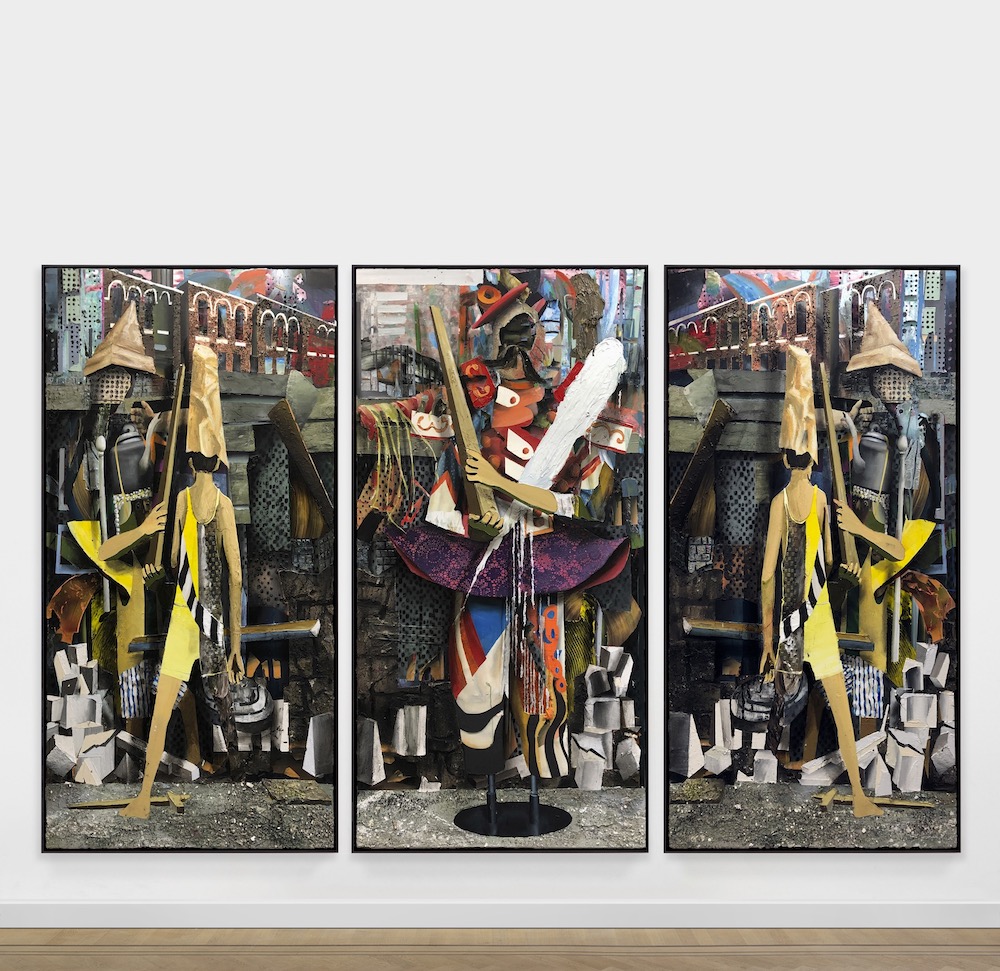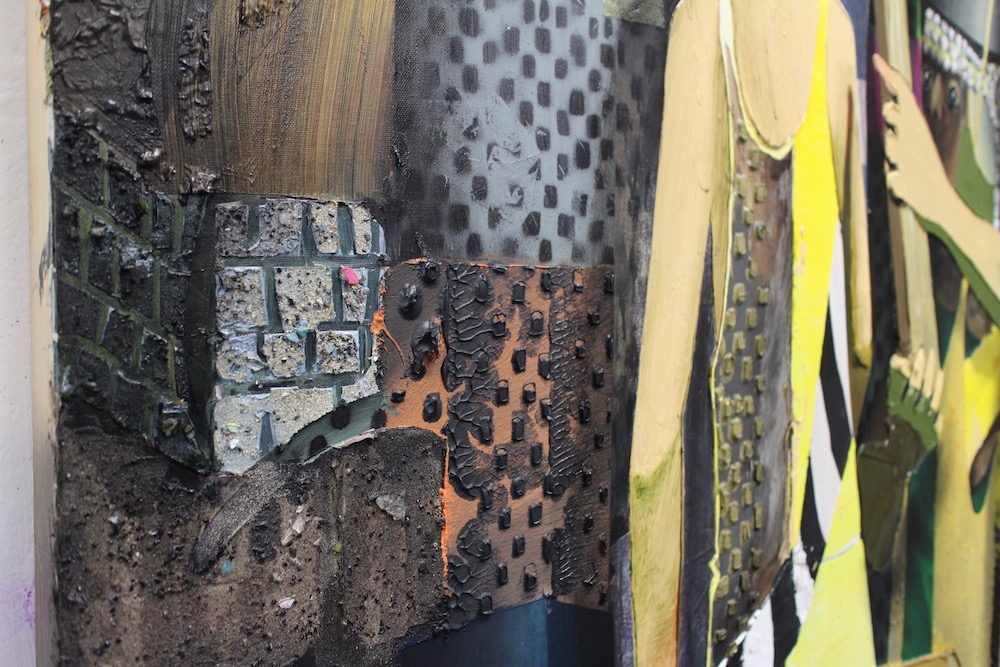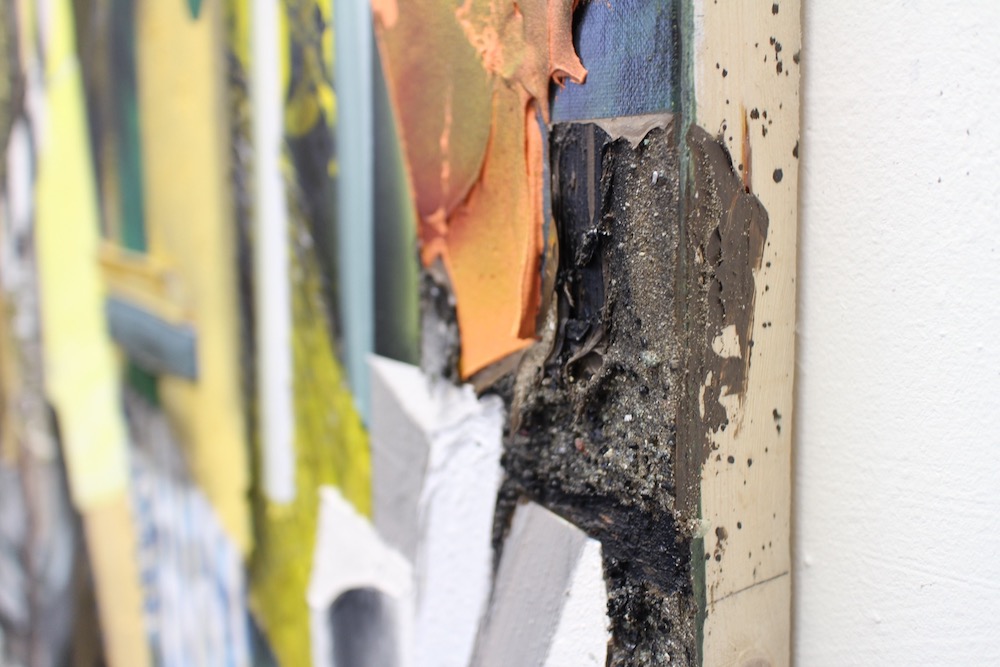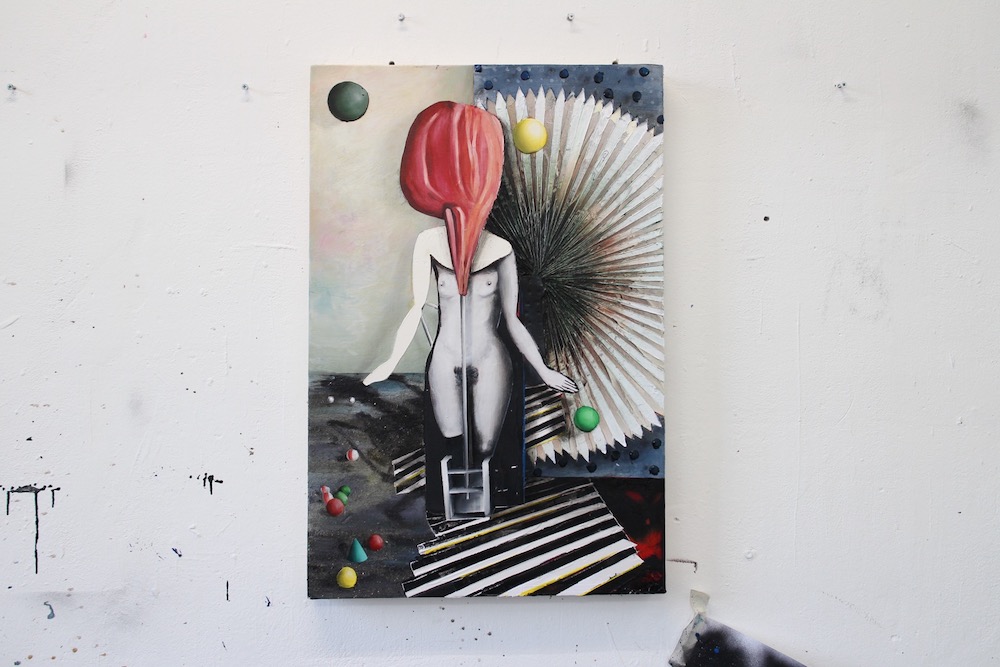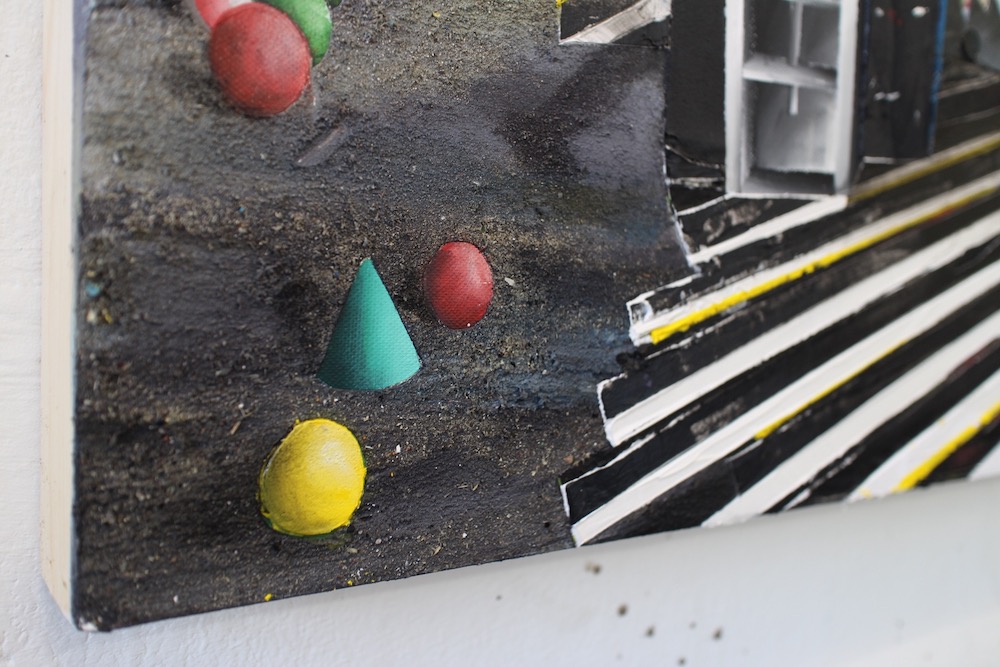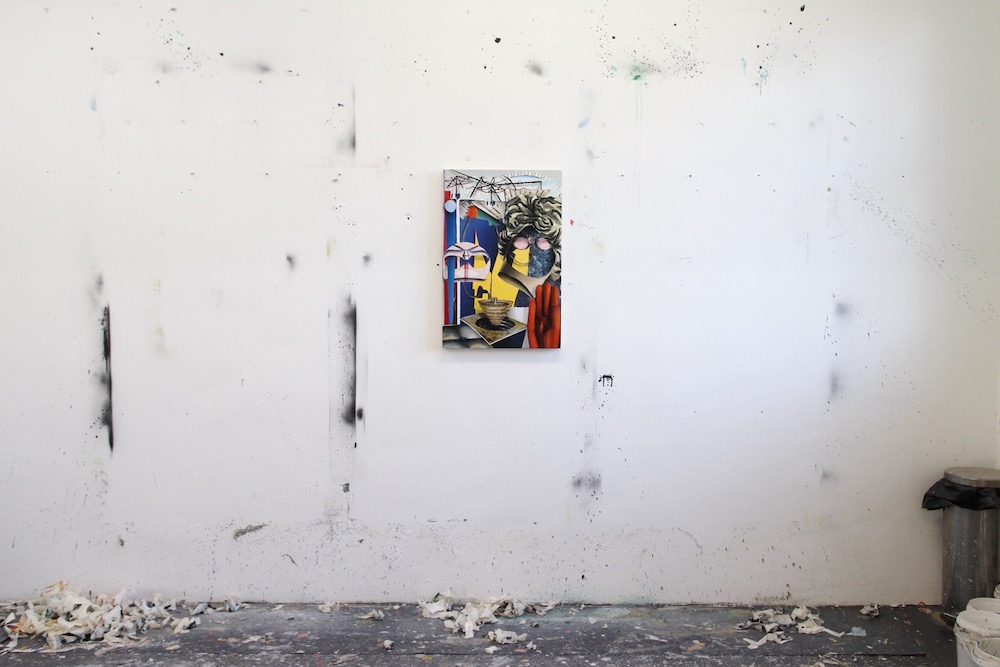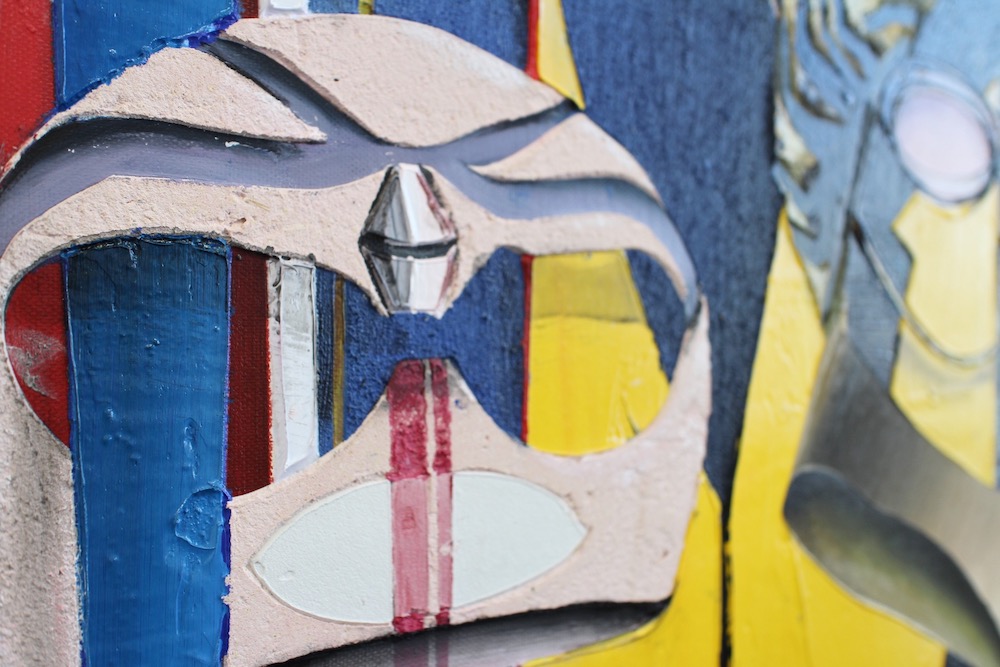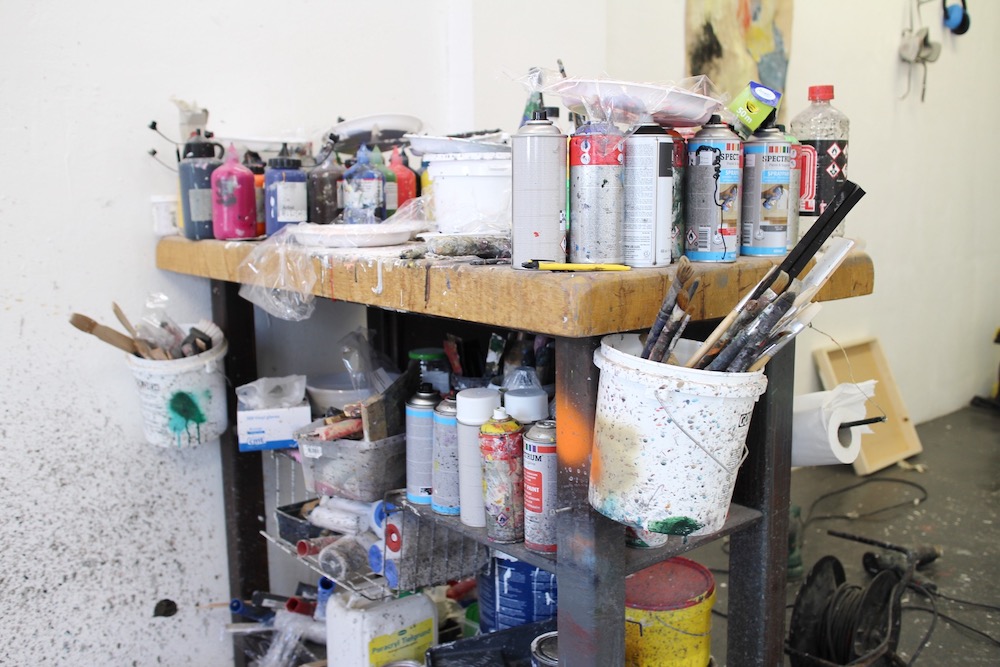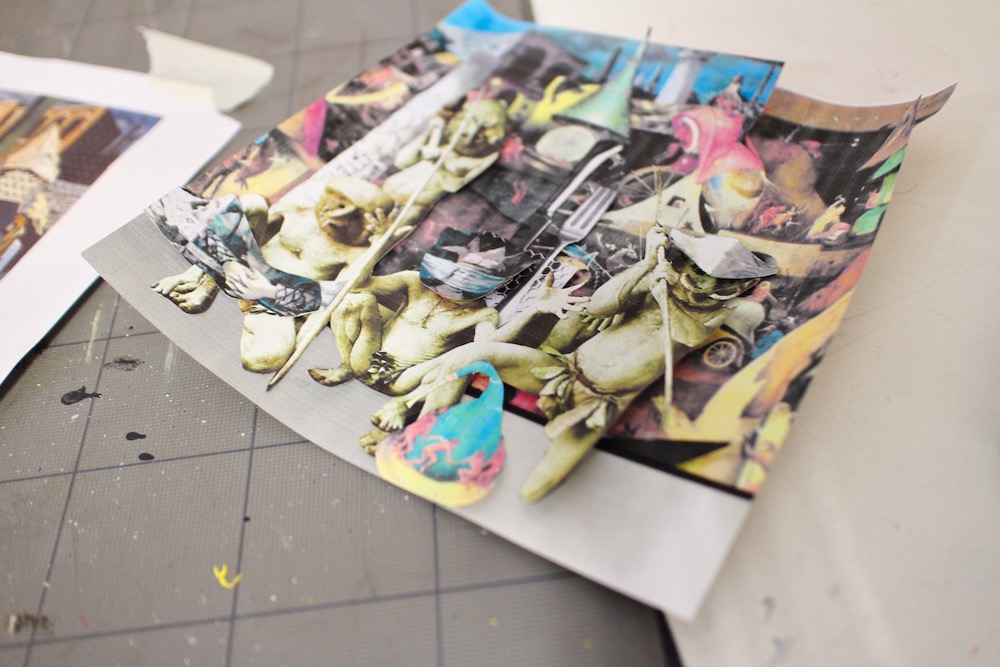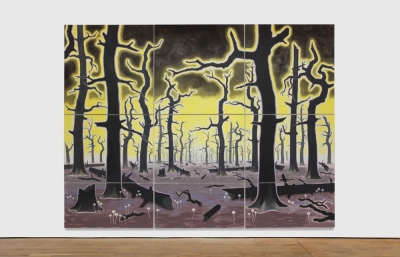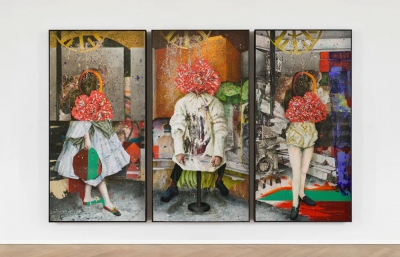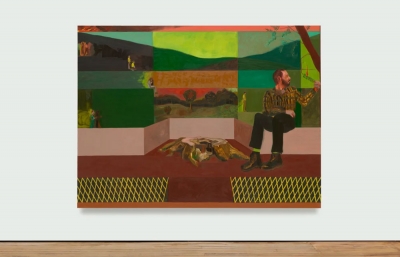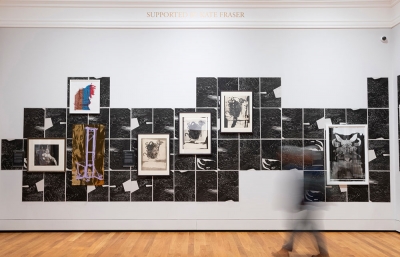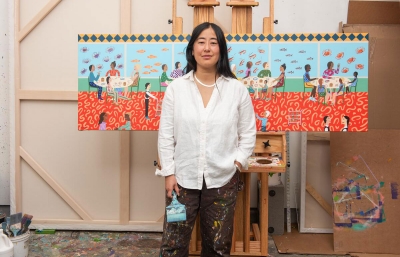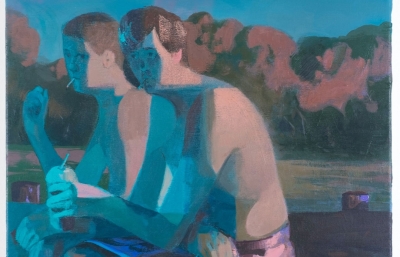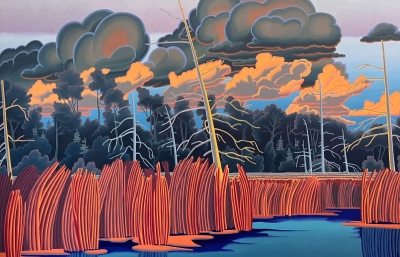A few weeks ago we had the chance to have an early peek at some of the new pieces that will be included in Symbiosis: Virtues, a solo exhibition of new paintings by Tjebbe Beekman at Grimm Gallery in Amsterdam. Following his last year's debut with the gallery at their NYC space, this exhibition will mark the artist's first solo exhibition in Amsterdam since 2017 and will introduce the recent works which "engage with a range of intersecting traditions while acting as meditations on the present moment."
Working on this exhibition through the months of national-wide lockdown and curfew, Beekman was destined to get fully immersed in this body of work both mentally and physically, which entirely fits the approach he was developing in the past few years. Through his creative process, Amsterdam-based artist builds his visuals on the exploration of his influences from 20th-century art, with an accent on photography, architecture, and social realism aesthetics. Powered by an emotional response to the current cultural and/or socio-political climate, the fragments of those forms are used when assembling and constructing a distinctive reality in which abstraction clashes with surrealism, graphic elements interact with finely rendered sections, and the entire body of work is marked with an abundance of diverse surfaces and rich textures. Using his practice to dissect and recognize his own emotions and opinions regarding the present-day reality, the work is built intuitively, allowing the expressive mark-making to interact with imagery filled with symbolism, which is all built inside imposing, architecture-inspired compositions and formats.
Such focus on the focused perspective and bold appearance of the work isn't accidental, as Beekman told us. "Photography and the central perspective that is almost automatically associated with it, of course, revert to a form of reality and of truth. This thought seemed almost politically incorrect to me at the moment and I am therefore not interested in proclaiming an unambiguous truth in my work. The subjects within my work have moved in a fairly natural way from the outside (urban landscapes, buildings, etc.) to the inner space (interiors, etc.) and at this moment I have arrived in the ultimate inner space, my head. For me, this means that the appearance of the image must also be adjusted accordingly and that the photographic reality can more or less be pushed into the background," the artist explained the reasons his sketching process includes working with paper collage, rather than Photoshop or another digital format.
Following onto his debut with the gallery in NYC in October 2020, where he referenced the seven deadly sins in a series of paintings, in his new works, Beekman continues exploring this particular theme by depicting the seven heavenly virtues. Further on, both exhibitions will be connected conceptually with a central triptych piece we've seen at his Amsterdam studio. "The triptych form naturally refers to the well-known altarpieces that in themselves again want to depict life and death and good and evil," the artist told us about his interest in working with such a traditional format. "I see it as a logical parable with the current social demand for an unambiguous truth. I really like the connotation the triptych represents and I think there is still room in subject and form to create more." At the same time, this format is also allowing for technical exploration through a mirrored image and purposely limiting composition, which pushes the artist to further experiment with paint application and materials used, regularly mixing working with sand, gravel, and plaster. Such an approach is informed by the artist's continuous goal to create a link and correlation between history and the world today. Whether by making references to the art-historical canon and contrasting them with disruptive, even anarchistic mode of representation or by placing a highly personal response to the current socio-political reality inside such sacral configuration. —Sasha Bogojev
The artist’s first major monograph, designed by Irma Boom, is set to be published after the show, in the spring of 2021.

